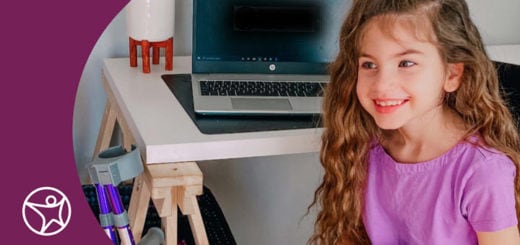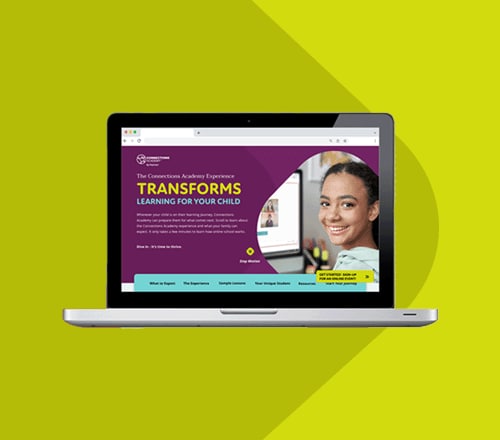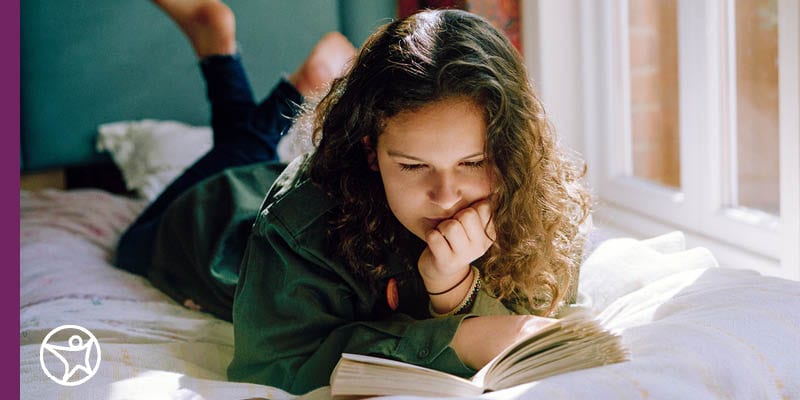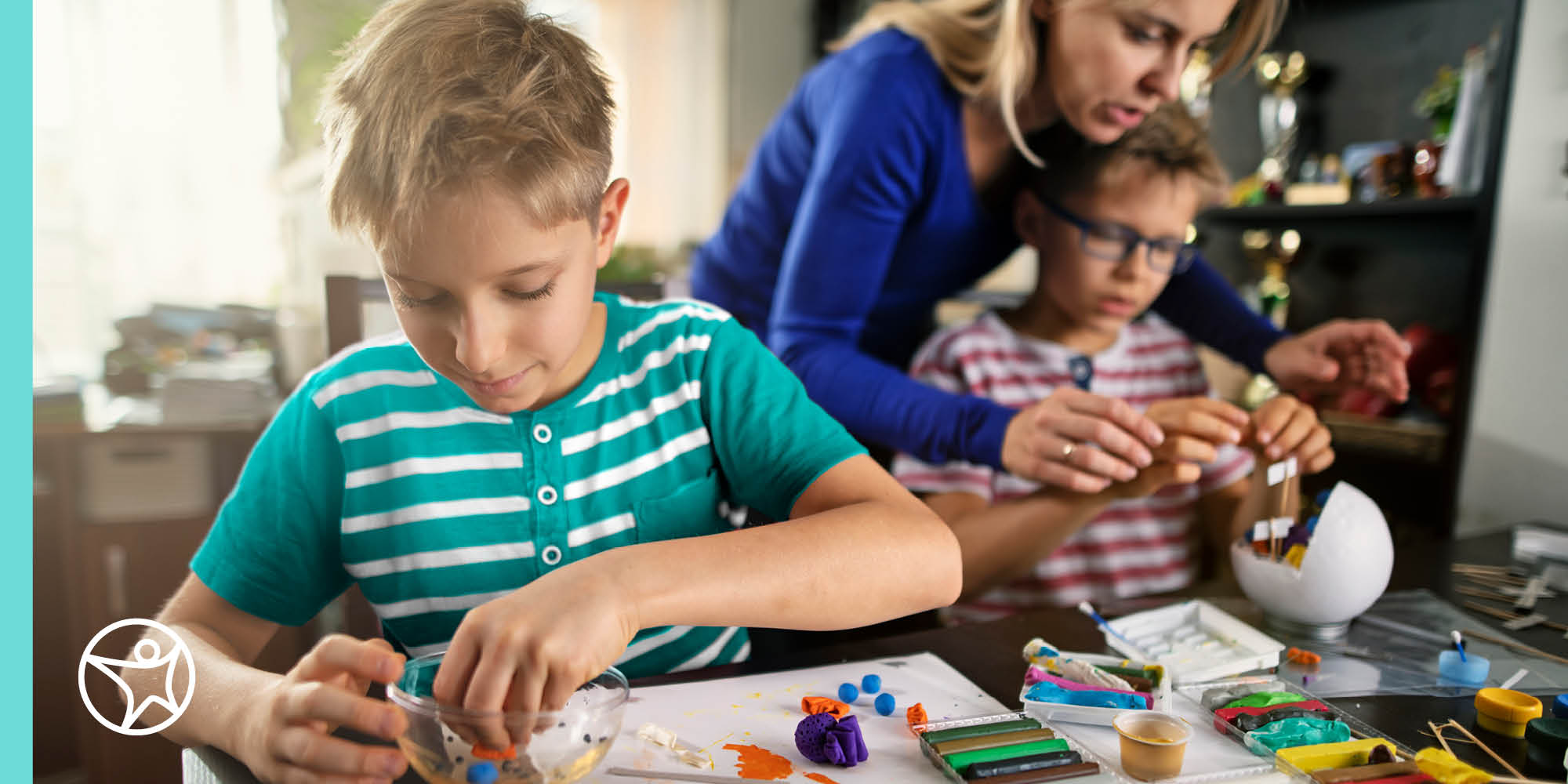Raising Cerebral Palsy Awareness with a Family’s Virtual Learning Story
byCorissa Hennessey
4 min to read
Many children with cerebral palsy face daily challenges when it comes to their health, but their education doesn’t have to have the same challenges. For students with cerebral palsy, it’s critical to find a school with an environment that is supportive, safe, and can deliver the special education framework needed for them to thrive in the classroom.
For online student, Abby, Connections Academy® has proven to be such a school. There, she has dedicated support from teachers and her Learning Coach so that she can approach her lessons and daily schedule in a way that works best for her. Abby’s mother and Learning Coach, Emily, is a Connections Academy alum herself, and knows from experience that the virtual school environment is a perfect fit for her daughter’s unique learning needs.
March is Cerebral Palsy Awareness month, and to help bring awareness to cerebral palsy and the benefits of finding success in online school, we’re highlighting how Abby has been achieving and exceeding milestone expectations.
Abby’s Online School Journey
Having attended Connections Academy as a virtual school student for the past two years, Abby’s journey hasn’t been unlike any other student’s experience. On a typical day, Abby wakes up, helps prepare breakfast, spends time with her family, makes her bed, and begins her online school lessons for the day. With her along the way are her two other siblings, one of whom is also a Connections Academy student.
But where her and her brother’s experiences differ is that the flexibility of Connections Academy allows Abby to attend physical therapy and other beneficial activities related to her condition without having to miss school.
As Learning Coach and mom, Emily uses an alternating schedule that allows her to focus one at a time on Abby and Liam’s lessons rather than trying to monitor both kids at the same time. This flexibility in scheduling is what Emily believes makes Connections Academy such a great fit for their family.
As part of her education, Abby has what is called an Individualized Education Program, or IEP, that supports her learning with specialized staff that make modifications in Abby’s lessons to meet her where she is in the learning process. Emily and Abby meet with Abby’s teachers regularly to review her progress and discuss anything that may need to be adjusted for her needs.
“[Connections Academy is] very much work-at-your-own-pace,” Emily said. “I don’t push her. We don’t have to do everything in one day. We don’t work ahead if that’s not what’s beneficial for her.”
A Day in the Life of Abby
To learn more about a typical day for Abby, check out this video sponsored by Connections Academy:
Facts About Cerebral Palsy
In the United States, about 1 in every 345 children have been diagnosed with cerebral palsy.
Unless you know someone with the disorder, you may not know much about it. An important aspect of Cerebral Palsy Awareness Month (and Cerebral Palsy Awareness Day) includes educating the public on cerebral palsy as well as the educational needs of children who have the condition. To grow your knowledge, here are the answers to common questions you may be wondering about cerebral palsy:
What Is Cerebral Palsy?
Cerebral Palsy is an umbrella term that encompasses many disorders that affect muscle tone, movement, and posture. Cerebral palsy is caused by a disruption in brain development that can be due to mutations, infections, or brain injuries that occur before, during, or after birth.
And, not all cases of cerebral palsy are the same. In fact, each case is unique. Abby was diagnosed with Dandy-Walker malformation. Her condition is rare and just one of many possible cerebral palsy disorders that affect mobility.
When Is Cerebral Palsy Diagnosed?
Cerebral palsy is typically diagnosed during a child’s first two years of life. Typically, parents begin seeking a diagnosis when their child is not hitting certain mobility milestones, including crawling, walking, or an age-appropriate use of motor skills. It was for these reasons that Abby’s parents began seeking a diagnosis. They eventually discovered her condition is congenital, meaning it occurred while she was in utero.
Does Cerebral Palsy Affect Cognition?
Cerebral palsy doesn’t directly affect cognition, but around 30-50% of cerebral palsy cases include co-occurring intellectual or developmental disorders, such as autism spectrum disorder. Due to challenges related to mobility along with a high potential for co-occurring disorders, many students with cerebral palsy can benefit from a virtual learning option.
Cerebral Palsy and Online Learning
Students with cerebral palsy face challenges that are highly individualized, and their education often requires a significant amount of personalization. Online school provides students with special needs, like cerebral palsy, with the ability to learn in a safe environment with flexible pacing that allows students to focus on their education and well-being.
If co-occurring with autism, students with cerebral palsy may also have difficulties with verbal language processing, socialization, and sensitivity to sensory stimulation, such as bright lighting and noisy school bells.
Students with cerebral palsy or other special needs have the option to create an IEP that’s tailored to their specific learning needs. IEPs enable students to take a personalized approach to their own education and receive ongoing support and modifications throughout the learning process.
Learn more about how Connections Academy’s online public school program can help students with special needs by finding your local Connections Academy school and connecting with the school’s special education representative.



